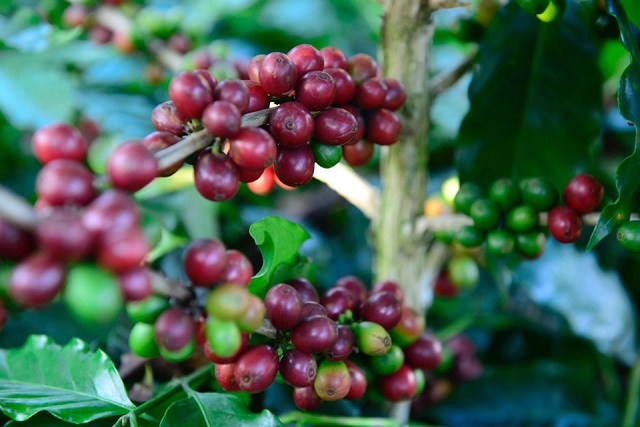According to the latest statistics from the General Department of Vietnam Customs, in the first 15 days of September, Vietnam exported 38,000 tons of coffee, equivalent to $92.9 million. Compared to the same period last year, coffee exports from September 1 to September 15 decreased by 25% in volume and 10% in value. However, accumulated from the beginning of the year to September 15, coffee exports still increased 12% in volume and 38% in value.
According to statistics from the Import-Export Department (Ministry of Industry and Trade), in August, the average export price of Vietnam’s coffee increased for the third consecutive month, to $2,365/ton, up 2.9% over the previous year. last month and increased by 17.6% over the same period last year. Accumulating 8 months, the average export price of Vietnam’s coffee reached 2,271 USD/ton, up 21.8% over the same period last year.
From September 18 to now, the domestic coffee price has been flat. According to the Commodity Exchange of Vietnam (MXV), the reason is that many localities in the country have not yet had a new crop and have little inventory. Previously, the price of coffee purchased domestically and for export continued to increase sharply, at one point approaching a record level of 50,000 VND/kg. This promotes high coffee export turnover.
According to MXV, on September 21, the selling price of green coffee beans in the Central Highlands and Southern provinces was stable, ranging from 46,900 to 47,500 VND/kg.
On the price list of industrial raw materials, Arabica coffee prices continued to increase by nearly 2% from the beginning of the week after the Brazilian government’s Crop Supply Agency (Conab) cut coffee output in Brazil.

Earlier, on the evening of September 20, Conab announced the results of the third survey on coffee production in Brazil. According to reported data, Conab has reduced the expected amount of coffee of the world’s number one exporter from 53.43 million bags of 60kg in May to 50.38 million bags in September.
The volume of Arabica coffee also decreased by 3.3 million bags compared to the previous report and 3.1% compared to the previous crop year. This raised concerns about a supply shortage when the Arabica standard inventory on the ICE Exchange is falling deeply and reaching the lowest level in more than 23 years. The real continued to increase in the session of September 20, causing the selling force of Brazilian farmers to weaken, and the selling price to increase. At the end of the session, the price of Arabica increased by nearly 2% and Robusta increased by 1.54%.
Palm oil prices rose 1%. India is expected to be able to import up to 2 million tons of palm oil from Indonesia between August and November, showing the prospect of this commodity’s demand in the near future, thereby supporting prices. However, the palm oil supply figures for the first 20 days of September in Malaysia are showing easing, which will likely make the upside in palm oil prices difficult to hold in the medium to long term.
In the opposite direction, cotton prices fell by nearly 3%. The USD rose again and anchored at a high of the past 20 years, making US cotton more expensive for customers holding other currencies, thereby limiting the buying power of this commodity. Besides, the dry weather, favorable for harvesting, is expected to help ensure cotton supply from the US, which also put pressure on prices yesterday.
